When we talk about stakeholder management and keeping people informed of the status of a project, there are two techniques to keep in mind:
The purpose underlying both of these techniques is critical to the success of your project.
These techniques must be committed to and embraced by you and your team so that all goes well.
Failure to accept this challenge leads to schedule delays and rework, which results in the failure of the project to meet the expectations of all interested parties.
It’s as simple as that.
1. Communications Management
The Communication Matrix
There are two elements of information that we need to put together to accomplish stakeholder management efficiently.
The first one is called the communication matrix.
This matrix is a standard product that all project managers develop in the project initiation phase of setting up any project.
Whether it’s done formally or informally depends on the motivation and commitment of the project manager and team and the complexity of the project.
However, it is an excellent first step and best practice in getting your stakeholder management under control.
It demonstrates that the project team is thinking in a systematic fashion which will yield discipline and structure as a result.
Systems thinking will produce significant benefits over time.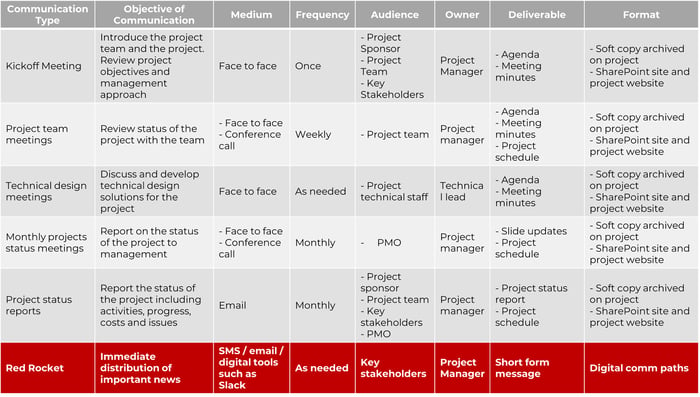
This matrix is a technique to organise your thoughts and set up the project calendar.
You can see in the audience column where key stakeholders fit into the communications scheme.
Another smart part of this communication plan is to establish who can release the deliverable.
A simple decision process tree can accomplish that. Obviously, yours will be unique to your project and company.
The one presented here is a generic guide detailing the logic behind the process:
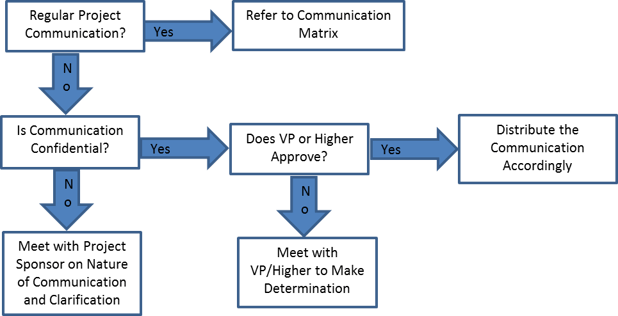
The Stakeholder Analysis Process
Stakeholder analysis is the other piece of the stakeholder management puzzle.
This analysis method is useful in accomplishing several purposes:
-
Discoverability
You may think you know who all the stakeholders are but chances are, there are some outliers external to the project and even some internal people that you overlooked.
You need to examine your organisational personnel diagrams and all incoming communications (email, SMS, Slack, Teams, instant messaging) and identify everyone that might have a stake in the project.
In addition to your daily communication tools, consider researching for stakeholders using digital channels such as search engines and even social media channels. -
Stakeholder Mapping Scheme and Organisation
We laid out the communications matrix first for a reason: it provides a landing spot for every stakeholder you identify.
If it doesn’t, then either your communication matrix is deficient or that person isn’t a stakeholder.
You need to know what stakeholders hold power and interest over your project.
The proper technique for sorting all that out is to use a grid structure to group your stakeholders, which is part of a stakeholder mapping process:
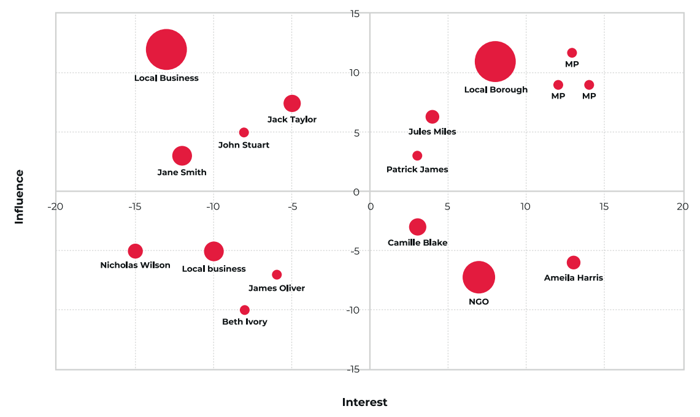
Having stakeholders with power and influence is critical to achieving your goal.They will be your primary audience and should include both the immediate decision-makers and opinion leaders – i.e. the people whose opinion matters.
Stakeholders in other quadrants of the grid should be kept informed and satisfied.
Ideally, they will be supporters of the proposed program or policy change. This is your secondary audience.
Communications Matrix and Stakeholder Analysis Integration
A typical distribution of stakeholders is shown on the mapping grid.
Referring to the communications matrix, we are now in a position to map our communications deliverables to the stakeholder mapping effort in a more granular fashion.
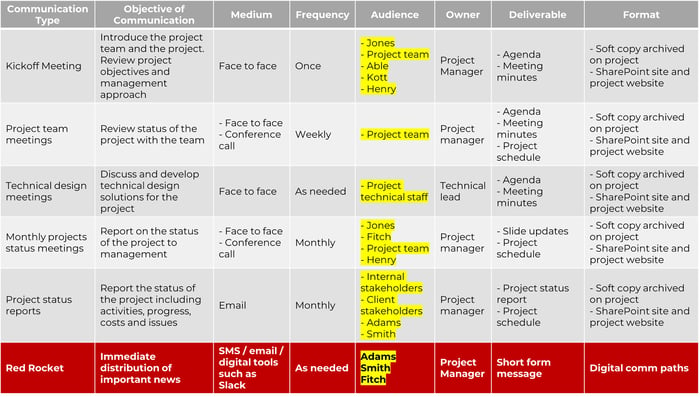
Again, the sample grid provides the logic behind the analysis method. You need to tailor your grid to your situation.
The value inherent in this grid process is that it will guide you on how to develop your distribution lists for the communication deliverables you produce in the project.
2. Risk Management
Managing Risk in Stakeholder Analysis
This is a case of solving the dilemma associated with the old saying, “You don’t know what you don’t know.”
The depth of your stakeholder analysis is one of those cases in point. How deep is deep enough?
The fact is that, as a project manager, you are not included in all the things that go on in the corporate boardroom.
The stakeholders we have accounted for thus far are project and company people that are affected by your project plan.
That thought was then extended to the business-to-business (B2B) aspects of stakeholders analysis to include client people that will probably touch the project in some way. They are the natural ones.
The people and organisations you tend to forget about are those that had involvement in the project in the early stages, possibly without your knowledge at the project management level.
These stakeholders could include lending institutions (the account manager there just might care how well you’re doing), external members of the board of directors who care about the performance of corporate stock value, business partners with whom you have a contractual relationship, as well as potential corporate investors and venture capital firms.
The money has to come from somewhere.
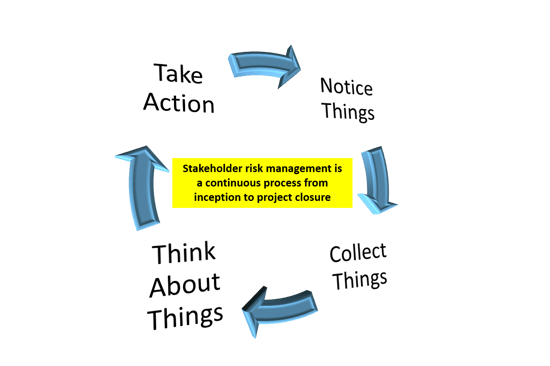
It is your job to review all corporate records and communications related to your program all the way back to when it was just being discussed and not formally declared as a project.
Names and organisations will emerge from that analysis that represents a risk to your project. You need to know who the supporters of the project were and more importantly, who the detractors of the project were.
The detractors will have lodged their hesitancy about implementing the project. You can bet it was one of the big four; cost, schedule, performance, or technology.
You need to know the nature of the risk so that you can form a risk response strategy.
One of those actions may be to rethink your communications matrix and include an expanded list of reports that include risk mitigation and risk prevention actions being taken.
The success of risk management is to take the time to visualise each perceived risk fully. Then, a proactive plan to put risk aversion measures in place will meet the expectations of those stakeholders.
Adaptable Stakeholder Management
These techniques are all driven by a strong systems-thinking approach and are process-driven.
All processes like these must live in a continuous process improvement environment. Key stakeholders will come and go.
The status of a stakeholder in the grid structure may change. Your stakeholder management must change with it.
As with all processes, someone must own it to ensure that the process remains current and valid.
If you as the Project Manager are not the owner, make sure the ownership is delegated to a trusted assistant.
Stakeholder management is people management.
That in itself introduces an incredible amount of complexity and sophistication to the task because managing the expectations of people requires some disciplined and structured skills.
The techniques needed must be process-driven to obtain the needed structure and discipline. The comprehensive identification of stakeholders is critical.
Remember, stakeholders, include all individuals and organisations who are impacted by the project whether they have an active role in the project or not.
Using that definition, some stakeholders could be external to the company or organisation and thus not involved in the current day-to-day communications scheme.
These stakeholders with whom we need to communicate externally to the project are classified as key stakeholders because it will take particular attention to make sure they don’t “slip through the crack” and become uninformed.
Discover how Tractivity can help you take your stakeholder management to the next level.

